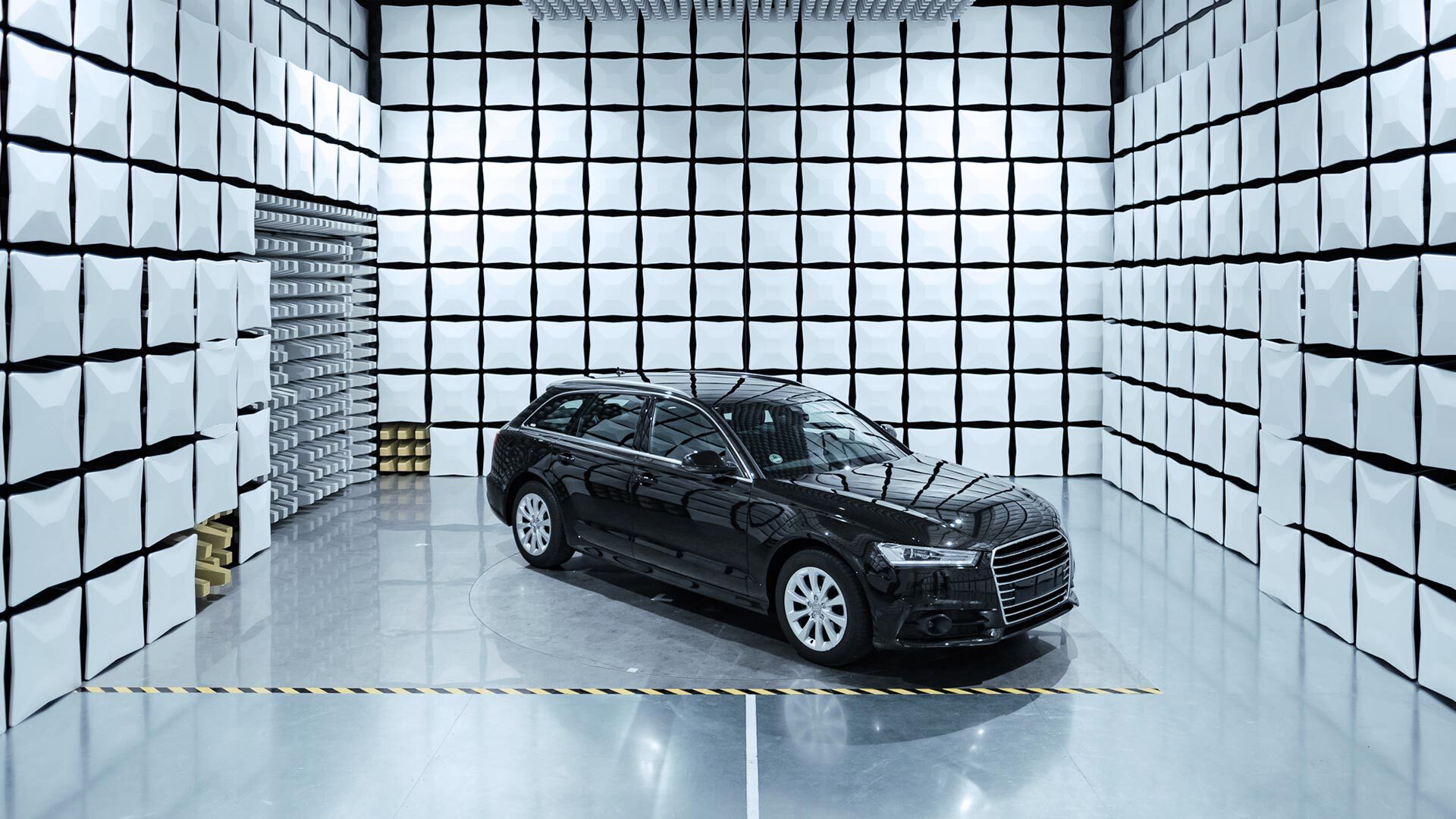Radar applications at “unusual” frequencies in the industrial sector or, for example, at airports are subject to very different regulations – as far as they exist at all. cetecom advanced helps the pioneers from the development departments via various analyses and exception procedures that the devices are approved. We can carry out the partly very special tests directly in our in-house laboratories up to 500 GHz.

Radar is used in modern vehicle safety systems in conjunction with cameras, ultrasound and other sensors. The aim is to obtain information about a vehicle’s surroundings. There are three main types of automotive radar technology, which differ primarily in the distance of the measurement range:
With advances in autonomous driving, the number of radar sensors required in a vehicle is increasing for redundancy and measurement accuracy reasons; including radar sensors for blind spot, stop-and-go functionality, automatic speed control, and lane assistance systems.
For most countries, the regulation is divided into the two frequency bands 76-77 GHz and 77-81 GHz.
Exception: In 2017, the FCC has homogenized spectrum regulation for both areas and is thus one step ahead of many countries.
A relatively new trend is the use of very high frequencies, well above those used in cars. New industrial systems may require radars, some of which operate well above 100 GHz (for example, for improved measurement of material properties during manufacturing, more accurate detection of geometric shapes, or in security technology). Until now, these frequency ranges have often been considered “useless” – and that is why many countries do not even have regulations for them that allow their use or even regulate them in detail.
In our accredited laboratories in Essen, Saarbrücken and Milpitas (USA) we offer test services for radar technologies. In accordance with the above-mentioned specifications, we test the following contents, among others:
With the modern equipment of our laboratories, including signal and spectrum analyzers for up to 85 GHz, millimeter-wave signal generators from 50 to 170 GHz and harmonic mixers, we are able to test future generations of broadband radar systems. And if, as in the case of the harmonics, it should go a little higher, no problem! We cover the frequency ranges up to 500 GHz for you with our calibrated measurement equipment and the experience of our staff.
Our test reports are recognized worldwide and can be used for market approval in Europe, USA, Canada and Japan. cetecom advanced’s service portfolio even goes beyond the country requirements mentioned above: for example, the testing services in our ISO-17025 accredited laboratories include regulatory radar testing for a variety of international certification systems based on different test specifications and standards.
We are pleased to offer technical support during the development phase to answer your questions about regulatory requirements in preparation for the final certification-relevant tests.
Of course, we are also happy to complete our portfolio of radio measurements for you with our other testing and certification services.